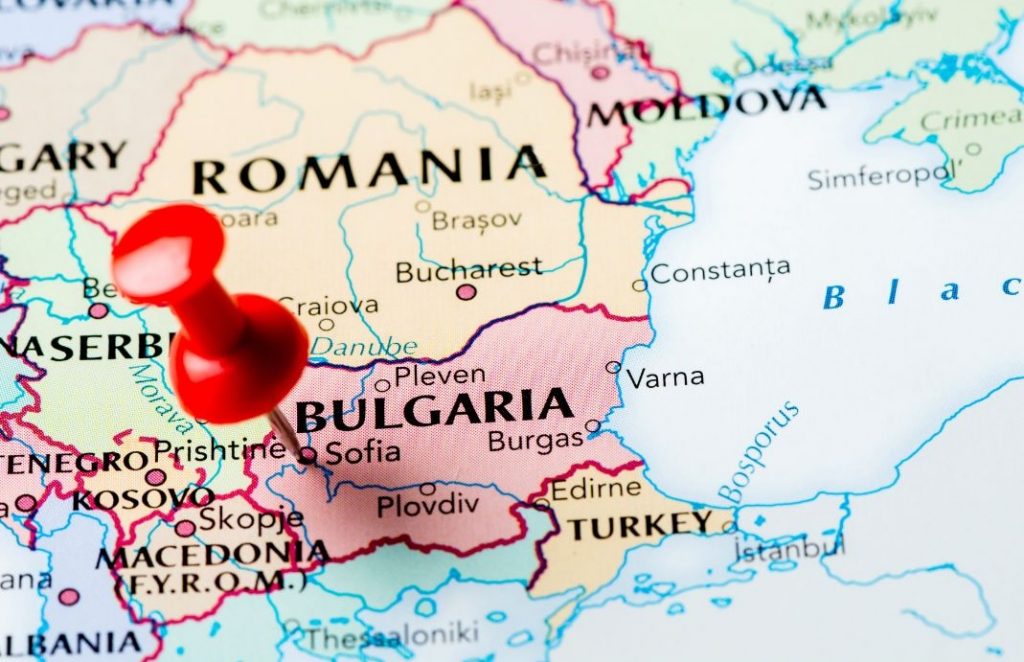
Welcome to my blog on my recent journey through Bulgaria! This trip was an incredible exploration of Bulgaria’s rich history, vibrant cuisine, and immersive cultural tours. As I share my experiences, I’ll also provide practical tips and insights to help you explore and appreciate this beautiful country, even before we dive into the historic sights and scenic views.
Stay connected while travelling with the convenience of an E-Sim, and stay tuned as we uncover what to be mindful of when travelling in Bulgaria, from local customs to essential travel tips.
Langugage
In Bulgaria, the official language is Bulgarian, a Slavic language that uses the Cyrillic alphabet. This can pose a challenge for travellers, especially those unfamiliar with Cyrillic scripts, as most signs, menus, and public information are predominantly Bulgarian. However, in major cities and tourist spots, many Bulgarians speak English, particularly the younger population and those in the hospitality industry. Learning basic Bulgarian phrases for greetings, directions, and transactions is advisable to enhance your experience and warmly connect with locals. Despite the language barrier, Bulgarians are generally helpful and accommodating to tourists trying to communicate
Bulgarian Phrases
Here are a few basic Bulgarian phrases that can help you connect with locals more easily:
- Hello: Здравей (Zdravey)
- Goodbye: Довиждане (Dovizhdane)
- Please: Моля (Molya)
- Thank you: Благодаря (Blagodarya)
- Yes: Да (Da)
- No: Не (Ne)
- Excuse me/Sorry: Извинете (Izvinete)
- How much does this cost?: Колко струва това? (Kolko struva tova?)
- Where is…?: Къде е…? (Kade e…?)
- Do you speak English?: Говорите ли английски? (Govorite li angliyski?)
The Importance of Cash
While credit cards are standard in Bulgaria in big cities, carrying cash is essential for smaller towns and local markets. This proved invaluable for day-to-day expenses like public transport and tips.
Must-Try Bulgarian Dishes
Bulgaria’s cuisine is a tasty revelation. Highlights include:
- Banitsa: A savoury pastry with eggs and cheese, ideal for breakfast.
- Shopska Salad: A fresh mix of tomatoes, cucumbers, and sirene cheese.
- Kavarma: A traditional meat stew rich in vegetables and flavours.
- Rakia, the strong local fruit brandy, is a staple at Bulgarian tables.
Tours and Free Walking Tours
I booked several day tours through Viator, enjoying customised trips to Rila Monastery and Plovdiv, enhanced with expert local knowledge. Additionally, free walking tours in Sofia and Plovdiv offered cost-effective ways to learn about their historical richness, providing deep insights without the hefty price tag.
Exploring Sofia and Plovdiv's Historical Wonders
Embarking on a journey through time, my recent adventure to Bulgaria unfolded with an enthralling exploration of Sofia and Plovdiv, two cities brimming with historical treasures and cultural wonders.
To explore Bulgaria’s scenic landscapes and historical sites, I booked day tours through Viator. This platform offered many options, allowing me to customise my adventures to places like the Rila Monastery and the ancient city of Plovdiv. These tours were convenient and provided insightful commentary from knowledgeable local guides.
Additionally, I participated in free walking tours to stay budget-friendly and immersive, especially in Sofia and Plovdiv. These tours are a fantastic way to get oriented with the cities and learn about their rich histories from passionate local guides offering free services. However, tipping is encouraged and much appreciated.
SOFIA
Wandering through Sofia, one is immediately struck by the city’s unique blend of architectural styles. The Statue of Sveta Sofia, a symbol of wisdom and faith, is a perfect starting point for any Sofia walking tour. Nearby, the ancient Roman ruins of Serdica offer a glimpse into the city’s storied past. The Alexander Nevsky Cathedral, a marvel of Neo-Byzantine architecture, and the Rotunda of St. George, Sofia’s oldest preserved building, add to the city’s rich architectural tapestry. As you walk along the distinctive yellow cobblestones, the National Assembly and the Tsar Osvoboditel monument stand as testaments to Bulgaria’s journey through time. This unique blend of architectural styles creates a rich tapestry of history for all Bulgaria travel enthusiasts, leaving them intrigued and eager to explore more.
Alexander Nevsky Cathedral
Alexander Nevsky Cathedral in Sofia is a stunning example of neo-Byzantine architecture, built to honour the Russian soldiers who died during the Russo-Turkish War of 1877-1878. It’s one of the largest Eastern Orthodox cathedrals in the world, accommodating up to 10,000 people.
The cathedral’s design features luxurious materials like Italian marble and Brazilian onyx, and its interior is adorned with intricate frescoes and a remarkable collection of religious art. The crypt, which serves as a museum, houses an impressive array of medieval icons. More than just a religious site, the cathedral symbolises Bulgarian freedom and a key cultural landmark, attracting visitors from around the world.
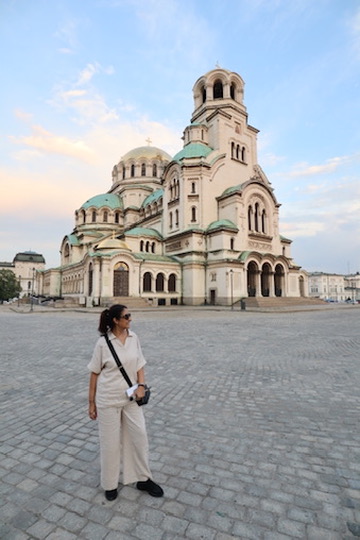
Architectural Influences in Sofia
Sofia’s architecture is a fascinating mosaic of Eastern and Western influences, reflecting the city’s complex history. Byzantine churches, such as the Boyana Church, reveal exquisite medieval art and architecture, while Soviet-era buildings contribute a stark, monumental style that speaks to the city’s more recent past. Walking through Sofia, you’ll find that these diverse styles coexist harmoniously, creating a unique urban landscape. The eclectic blend is further enriched by Neo-Renaissance and Neo-Baroque buildings, which dot the cityscape and add a touch of grandeur. This architectural diversity tells stories of various periods, from the Roman and Ottoman empires to the influences of the 20th century. For history buffs and architecture enthusiasts, this makes Sofia a captivating destination within Eastern Europe travel itineraries. Exploring Bulgaria through Sofia’s buildings provides a vivid narrative of historical timelines, encouraging visitors to look beyond the facades and delve into the cultural fabric of this intriguing city.
At the heart of Sofia lies the ancient Roman town of Serdica. The preserved remains of Serdica, including public buildings and streets, are fascinating for any visitor interested in Roman ruins in Sofia. The Rotunda of St. George, dating back to the 4th century, is another significant historical monument with well-preserved frescoes narrating the city’s early Christian history. Nearby, the Largo complex showcases impressive remnants of Roman architecture, seamlessly integrated into the modern cityscape. These sites and the archaeological museum comprehensively look at Sofia’s transformation over the millennia. For those exploring Bulgaria, these gems are essential stops that vividly illustrate the rich tapestry of history woven into the city’s foundations, offering travel enthusiasts a profound connection to the past.
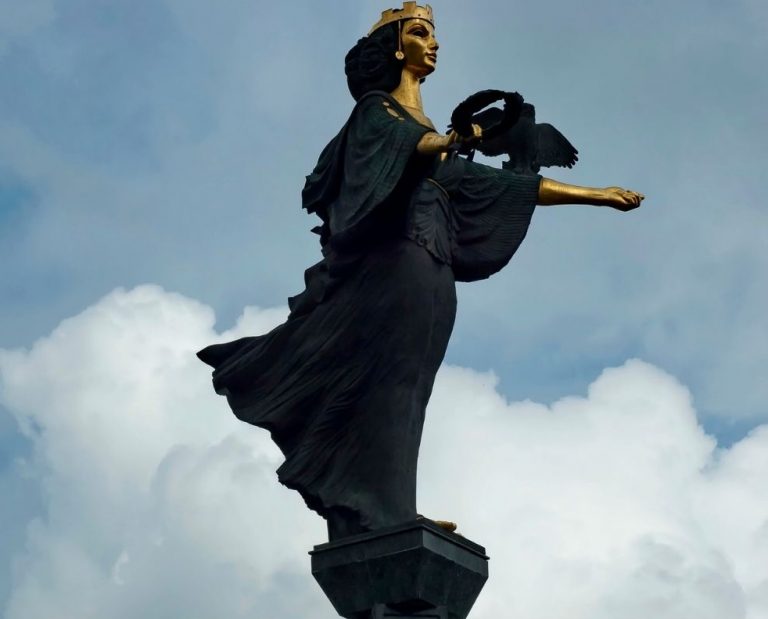
Statue of Sveta Sofia
The Statue of Sveta Sofia is an emblematic monument located in the heart of Sofia, Bulgaria. Erected in 2000, it stands as a modern symbol of the city, replacing a previous statue of Lenin. Designed by sculptor Georgi Chapkanov, Sveta Sofia is depicted as a majestic figure, adorned with symbols of power and wisdom, including a crown topped with an owl and a laurel wreath in her hand. Positioned at a busy intersection, the statue not only represents the patron saint of the city, St. Sofia, but also embodies the city’s historical and cultural evolution. Despite some controversy over its religious implications, the Statue of Sveta Sofia has become a notable landmark and a popular photo spot for both residents and tourists.
Enchanting Plovdiv
A Day Trip Adventure
The next day, I took an exciting bus ride to Plovdiv, a city enchanted by its lush landscapes and ancient allure. The distance is approximately 145 kilometres (about 90 miles) by road, and the driving time takes 1.5 to 2 hours, depending on the traffic.
The journey from Sofia to Plovdiv is an experience in itself, offering a picturesque glimpse of Bulgaria’s diverse landscapes. As you travel the 145 kilometres by road, you are treated to sweeping views of lush valleys and rolling hills, a visual feast that sets the tone for the historical wonders that await. The drive, taking approximately 1.5 to 2 hours, is a beautiful escape from the urban hustle, making it ideal for those who appreciate the tranquillity of nature. Along the way, you’ll pass through quaint villages and green fields, perfect for photography enthusiasts seeking to capture the essence of rural Bulgaria. This scenic route highlights the country’s natural beauty and provides a peaceful transition into Plovdiv’s enchanting historical setting. Embracing both the journey and the destination enriches the overall experience, making this day trip a memorable adventure for those exploring Bulgaria’s myriad attractions.
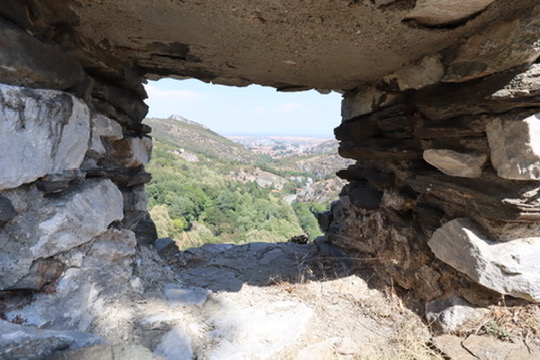
Highlights of Plovdiv's Old Town
Plovdiv’s Old Town is a delightful journey into the past, where cobblestone streets wind through a landscape of beautifully preserved 19th-century houses and historic buildings. The vibrant colours and intricate wooden architecture reflect a period known as the Bulgarian National Revival. Walking through these streets, you’ll come across numerous museums and galleries, each offering insights into the city’s rich cultural heritage. Notable highlights include the Ancient Roman Theatre, a remarkable 1st-century AD amphitheatre that still hosts performances today, offering a blend of history and contemporary culture. Further exploration will lead you to the Roman Ancient Stadium, partially visible beneath the city, once a grand arena seating 30,000 spectators. Plovdiv’s Old Town is not only a visual delight but also a cultural hub, making it a must-visit for those keen on exploring Bulgaria’s depth of history and vibrant cultural narrative.
Ancient Roman Theatre
The Ancient Roman Theatre, the most renowned architectural marvel from the 1st century AD, is nestled in the heart of the Old Town. This well-preserved amphitheatre impresses with its grand design and capacity to seat up to 7,000 spectators. It continues to serve as a venue for concerts and theatre performances, allowing visitors to experience its historical grandeur firsthand. Another fascinating site is the Roman Ancient Stadium, partially unearthed beneath the bustling city streets. This stadium once held 30,000 spectators, hosting thrilling events and games. Though only a section is visible today, it offers a captivating glimpse into Plovdiv’s ancient sporting culture.
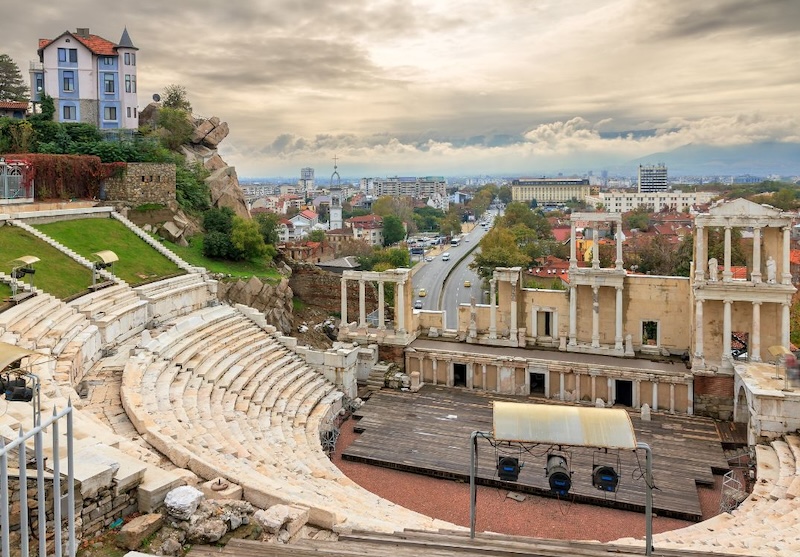
Kapana District
The Kapana District, often referred to as “The Trap,” is Plovdiv’s vibrant cultural and artistic center, nestled in the heart of Bulgaria’s second-largest city. Originally established in the 14th century as a bustling crafts and trade area, Kapana has been revitalized to become a lively hub for artists, entrepreneurs, and creatives. Its narrow, maze-like streets are home to a plethora of galleries, craft shops, boutique stores, and cozy cafes. The district is also known for hosting various cultural events, including workshops, festivals, and art exhibitions, making it a dynamic meeting point for both locals and tourists seeking to experience the contemporary pulse of Plovdiv amidst its historical setting.
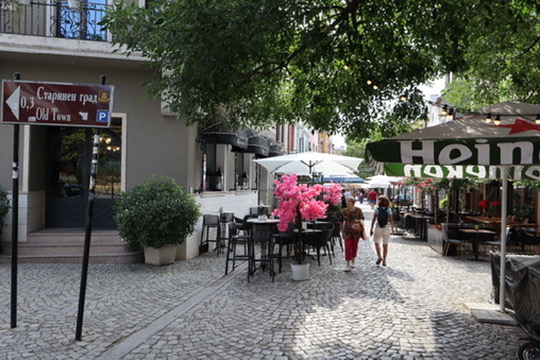
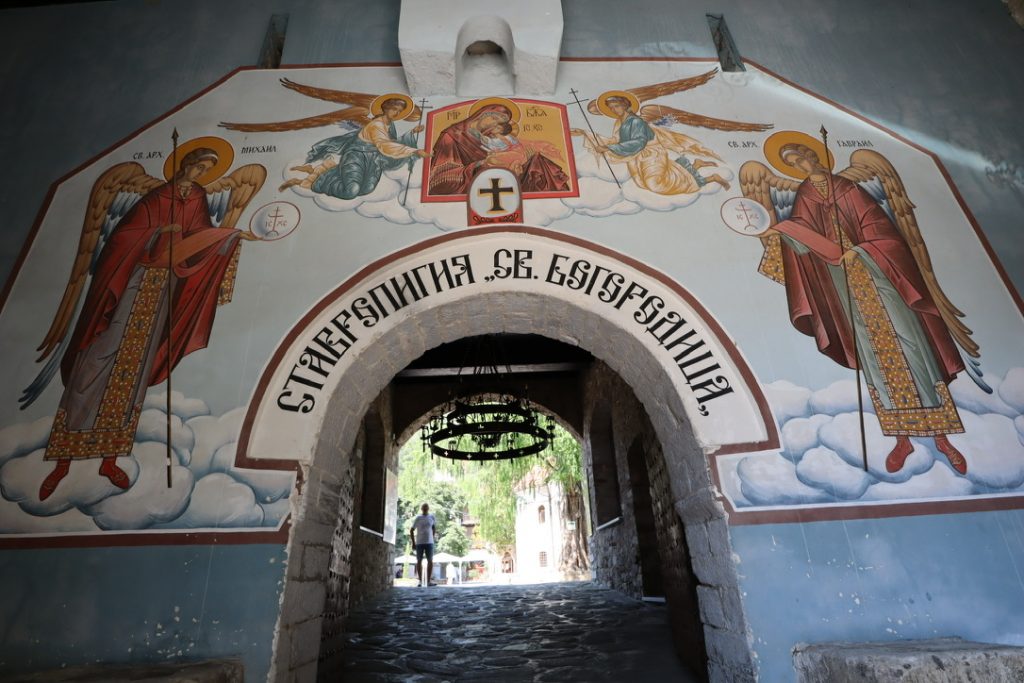
Bachkovo Monastery
Bachkovo Monastery, founded in 1083, is one of Bulgaria’s oldest and most significant Eastern Orthodox monasteries. Located in the Rhodope Mountains, it is renowned for its rich history, religious significance, and stunning medieval architecture. The monastery complex includes a main church adorned with exquisite frescoes, a dining hall with remarkable wall paintings, and a museum showcasing ancient religious artifacts and manuscripts. The site is especially famous for its icon of the Virgin Mary, believed to have miraculous powers, drawing pilgrims and tourists alike. Surrounded by lush forests, Bachkovo Monastery offers not only spiritual solace but also a picturesque retreat into Bulgaria’s natural beauty.
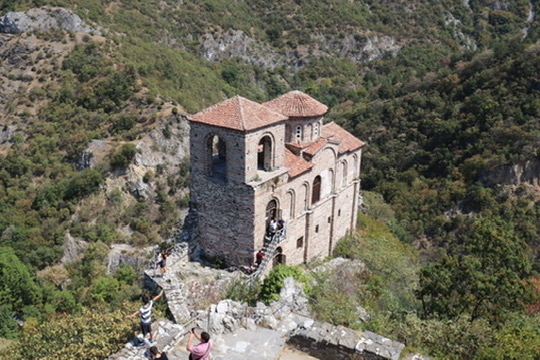
Asen’s Fortress
Asen’s Fortress, located in the Rhodope Mountains near Plovdiv, Bulgaria, is a historic fortification that dates back to the Thracian times. The fortress gained prominence in the Middle Ages, particularly during the reign of Tsar Ivan Asen II in the 13th century, after whom it is named. Today, the site is most famous for the Church of the Holy Mother of God, an exquisite example of medieval Bulgarian architecture featuring well-preserved frescoes and a distinctive cross-domed design. Perched on a high rocky ridge, Asen’s Fortress offers panoramic views of the surrounding valleys and is a popular destination for its historical significance and natural beauty.
Rila Monastery, Bulgaria’s largest and most famous Eastern Orthodox monastery, is a UNESCO World Heritage site in the Rila Mountains. Founded in the 10th century by Saint John of Rila, the monastery is a key religious site and a symbol of the Bulgarian spirit throughout centuries of foreign rule. It features striking architecture, including a main church with vivid frescoes, a large monastic complex with impressive wood carvings, and a museum housing medieval artefacts, including old manuscripts and religious garments. The monastery’s location in a scenic mountainous area adds to its allure, making it both a spiritual haven and a popular tourist destination.
RILEY MONASTARY
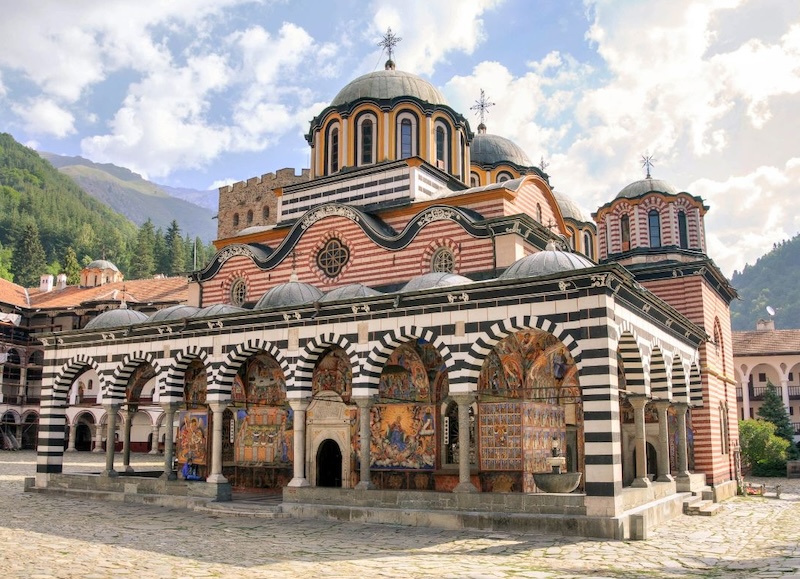
Final Reflections
Reflecting on my journey through Sofia and Plovdiv, I felt a sense of wonder and appreciation for the layers of history shared with me. The architectural grandeur and the tapestry of past civilisations mirrored in every corner of these cities, leaving a lasting impression. This adventure enriched my understanding of Bulgaria and deepened my connection to its cultural heritage. Exploring these captivating places was more than just a trip; it was an immersive voyage into the heart of a land where history lives and breathes.
